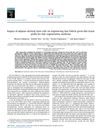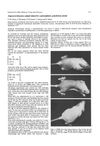Cell-Repellent Polyampholyte for Conformal Coating on Microstructures
June 2022
in “
Scientific Reports
”
polyampholyte prevelex cell-repellent coating protein adsorption sterilization cell adhesion micro/nano-fabricated silicon substrates spheroid formation mouse embryonic epithelial cells mesenchymal cells hair follicle germ-like aggregates microwell array device de novo hair follicles hair follicle regeneration nonfouling surfaces biomedical applications

TLDR Prevelex, a polyampholyte, can create a cell-repellent coating on microdevices, which can be useful in biomedical applications like hair follicle regeneration.
The document presents a study on the use of a polyampholyte, prevelex, for creating a cell-repellent coating on microdevice surfaces. This coating is resistant to protein adsorption, can withstand sterilization, and prevents cell adhesion. It was found to be uniform and ultra-thin on micro/nano-fabricated silicon substrates. The coating was also effective in inducing spheroid formation in various cell types. Notably, a mixture of mouse embryonic epithelial and mesenchymal cells formed hair follicle germ-like aggregates in a prevelex-coated microwell array device, which generated de novo hair follicles when transplanted into mice. The study concludes that prevelex can be beneficial for creating robust nonfouling surfaces in biomedical applications, including hair follicle regeneration. Further investigations are needed to examine the long-term stability of the coated layer and maintenance of cell-repellent capability against spheroids and other tissue grafts.






